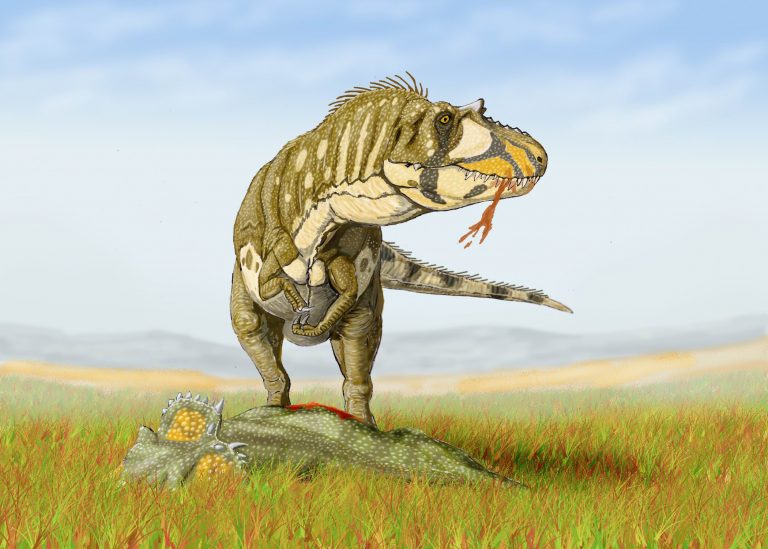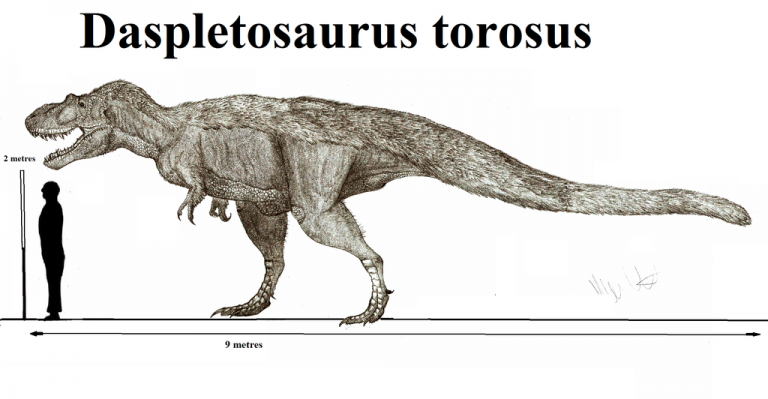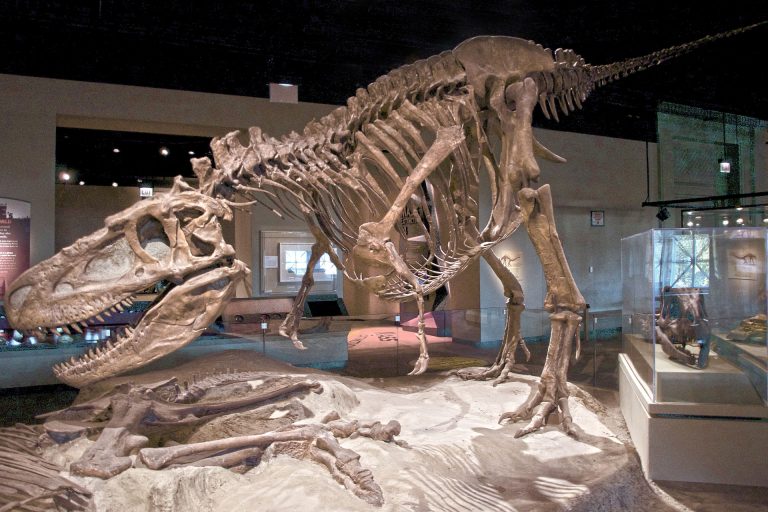Daspletosaurus

Daspletosaurus (meaning “frightful lizard”) was a type of tyrannosaurid dinosaur that lived in western North America between about 77 and 74 million years ago, during the Late Cretaceous Period. The genus Daspletosaurus contains two species. Fossils of the earlier type species, D. torosus, have been found in Alberta, while fossils of the later second species, D. horneri, have been found only in Montana. A possible third species, also from Alberta, awaits formal identification.

The theropod dinosaur Daspletosaurus or frightful lizard had a head as huge as the later Tyrannosaurus rex, with just as cruel teeth. With such big teeth, this carnivorous dinosaur may have been clever to attack and kill heavily plated species of dinosaurs, like ankylosaurs. A contempary of Gorgosaurus, Daspletosaurus was founded on a frame originally believed to be an undescribed species of Gorgosaurus. Dale A. Russell hypothesized that while the more lightly built and more common Gorgosaurus may have specialized in preying on the more ordinary species of hadrosaurids, the heavier, more robust Daspletosaurus may have specialized in the less prevalent armored species of the time such as the ceratopsids.
The fossils of a Daspletosaurus torosus were found in The Canadian Museum of Nature. It has been suggested that Daspletosaurus is a direct ancestor to Tyrannosaurus. The massive, stocky construct of the two tyrannosaurus and certain similarities in skull structures seem to be indicators of a close phylogenetic relationship between the two genera. Some have even gone further to suggest that Daspletosaurus is in fact a species of Tyrannosaurus (Daspletosaurus torosus = Tyrannosaurus torosus), but this has not been universally acknowledged. Currently, one species of Daspletosaurus, D. torosus, (torosus = “brawny”) has been officially documented.

Daspletosaurus is closely related to the much larger and more recent tyrannosaurid Tyrannosaurus rex. Like most tyrannosaurids, Daspletosaurus was a multi-tonne bipedal predator equipped with dozens of large, sharp teeth. Daspletosaurus had the small forelimbs typical of tyrannosaurids, although they were proportionately longer than in other genera.
As an apex predator, Daspletosaurus was at the top of the food chain, probably preying on large dinosaurs like the ceratopsid Centrosaurus and the hadrosaur Hypacrosaurus. In some areas, Daspletosaurus coexisted with another tyrannosaurid, Gorgosaurus, though there is some evidence of niche differentiation between the two. While Daspletosaurus fossils are rarer than other tyrannosaurids’, the available specimens allow some analysis of the biology of these animals, including social behavior, diet and life history.

While very large by the standard of modern predators, Daspletosaurus was not the largest tyrannosaurid. Adults could reach a length of 8–9 meters (26–30 ft) from snout to tail. Mass estimates have centered on 2.5 tonnes (2.75 short tons) but have ranged between 1.8 and 3.8 tonnes (2.0 and 4.1 short tons).
Daspletosaurus had a massive skull that could reach more than 1 meter (3.3 ft) in length. The bones were heavily constructed and some, including the nasal bones on top of the snout, were fused for strength. Large fenestrae (openings) in the skull reduced its weight. An adult Daspletosaurus was armed with about six dozen teeth that were very long but oval in cross section rather than blade-like. Unlike its other teeth, those in the premaxilla at the end of the upper jaw had a D-shaped cross section, an example of heterodonty always seen in tyrannosaurids. Unique skull features included the rough outer surface of the maxilla (upper jaw bone) and the pronounced crests around the eyes on the lacrimal, postorbital, and jugal bones. The orbit (eye socket) was a tall oval, somewhere in between the circular shape seen in Gorgosaurus and the ‘keyhole’ shape of Tyrannosaurus. Split carinae have been found on Daspletosaurus teeth.









